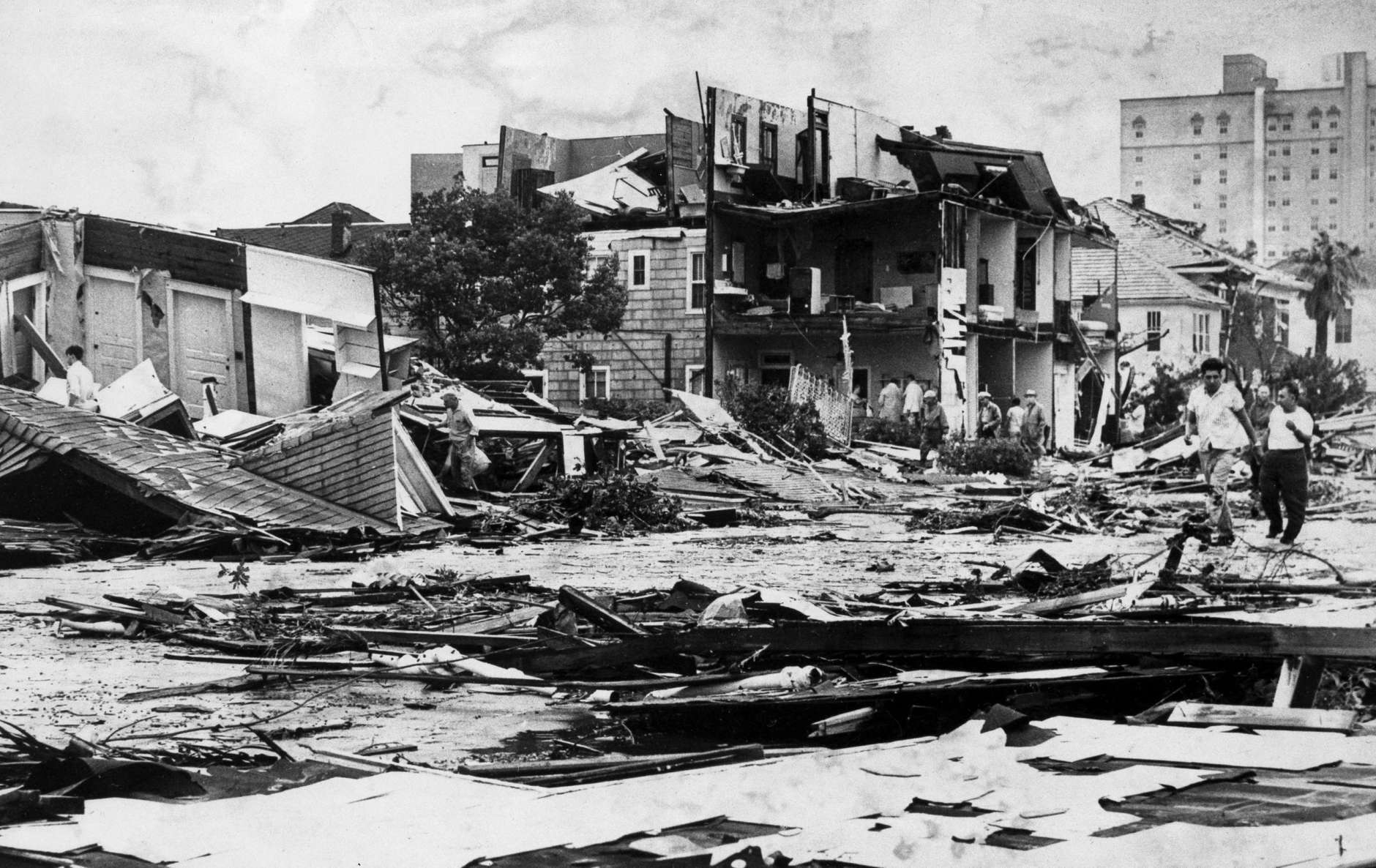

Hurricane watches were issued for the entire Texas coast on the 8 th of September and warnings were issued on the 9 th all along the Texas coast. Carla weakened to a tropical storm on the morning of the 12 th just east of Austin. The eye of Carla moved across Port O'Connor and Port Lavaca and then inland just east of Victoria. Carla made landfall on the afternoon of the 11 th on the northeast part of Matagorda Island as a strong Category 4 hurricane with a minimum central pressure of 931 millibars, or 27.49 inches of mercury, and sustained winds of 145 mph. Carla weakened slightly as it made a loop off the coast from Port O'Connor. The winds increased to around 175 mph early on the morning of the 11 th making Carla a Category 5 hurricane. After skimming the Yucatan peninsula, Carla moved northwest and strengthened to a large major hurricane over the Gulf of Mexico on the evening of the 7 th. It became a tropical storm off the coast of Honduras on the 5 th and quickly gained hurricane strength as it moved north to east of the Yucatan peninsula on the 6 th. Storm HistoryĬarla began as a tropical depression in the southwest Caribbean Sea on September 3 rd, 1961. Carla ranks as the 9 th most intense hurricane to affect the United States since 1851. Carla was the last of 6 hurricanes to make landfall on the Texas coast as a Category 4 hurricane on the Saffir-Simpson scale, with sustained winds stronger than 130 mph, in the 20 th century. Carla was the most intense hurricane to make landfall on the Texas coast in the 20 th century and second in recorded history only to the Indianola hurricane of 1886. Note: Proceeds from the sale of the book went to the Hurricane Carla victims.Although fifty years have passed, no other hurricane has made landfall in Texas with the intensity of Hurricane Carla since. The hurricane season has officially kicked off for 2014, and regardless how one chooses to have accurate weather information communicated to them, the first step in the process is the willingness of human beings to communicate verbally with each other. Over the last fifty years technology has evolved to provide the public with accurate weather information, delivering it to a variety of handheld devices real time. The joint effort of online reporting with the weather station, set the standard for storm preparation and reporting that is now emulated throughout the country. Over 500,000 people in the path of the huge storm had been safely evacuated. Since the audio and video signals were being transmitted together, Chief Engineer Biggs managed to establish a direct line to the Houston master control which supplied the video substituting the radar scope with weather maps.įor the next sixty hours, KHOU-TV in tandem with the Weather Bureau, continuously broadcasted intensified advisories, bulletins, and evacuation instructions. One of the unsung heroes was Racy Sanford, who climbed a 75-foot microwave tower in 80 mile-an-hour hurricane force winds, to drain water from the hook in the center of the micro-wave dish. All went well until after midnight when the video signal was lost due to water damage at the Alvin transmitter. Among the team was News Director, Dan Rather, and Chief Engineer, Art Biggs.īy double-hopping the signal from the command post to the KHOU-TV studio in Galveston, and then to a transmitter 20 miles away in Alvin, the makeshift station was able to operate both audio and video through the master control in Houston. Within minutes of agreeing to the tie-up, KHOU-TV dispatched a six-man technical crew to Galveston to establish a command post on the fifth floor of the Post Office Building where the Weather Bureau headquarters and the newly-installed giant radarscope were located. The management team at KHOU-TV contacted the Galveston Weather Bureau June 7, 1961, to arrange a joint effort to provide viewers with official advisories and bulletins via television. Jim Everhart, then a KHOU-TV reporter, documented the event in the book, “Hurricane Carla, A Tribute to the News Media,” compiled and edited by Warren L.

Weather Bureau in Galveston, and KHOU-TV in Houston, the television station became the official “eyes” and “voice” for the storm coverage. In an unprecedented tie-up between the U.S. Measures that would be considered mainstream in tracking hurricanes today, were innovative and unheralded. The media coverage of Hurricane Carla was among the most impressive in the history of mass communications. GREATER HOUSTON, Texas - Just over a half century ago the largest, the most powerful hurricane in the history of the Gulf Coast, hit Galveston.


 0 kommentar(er)
0 kommentar(er)
